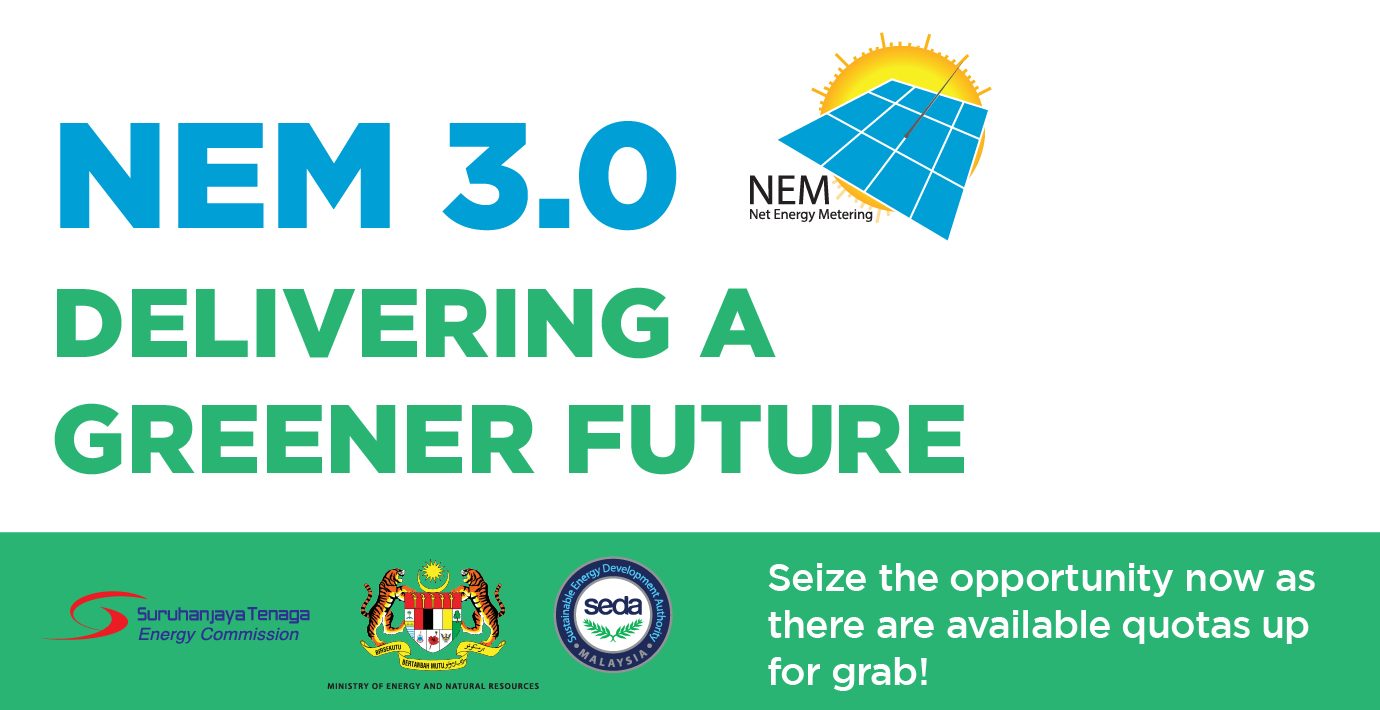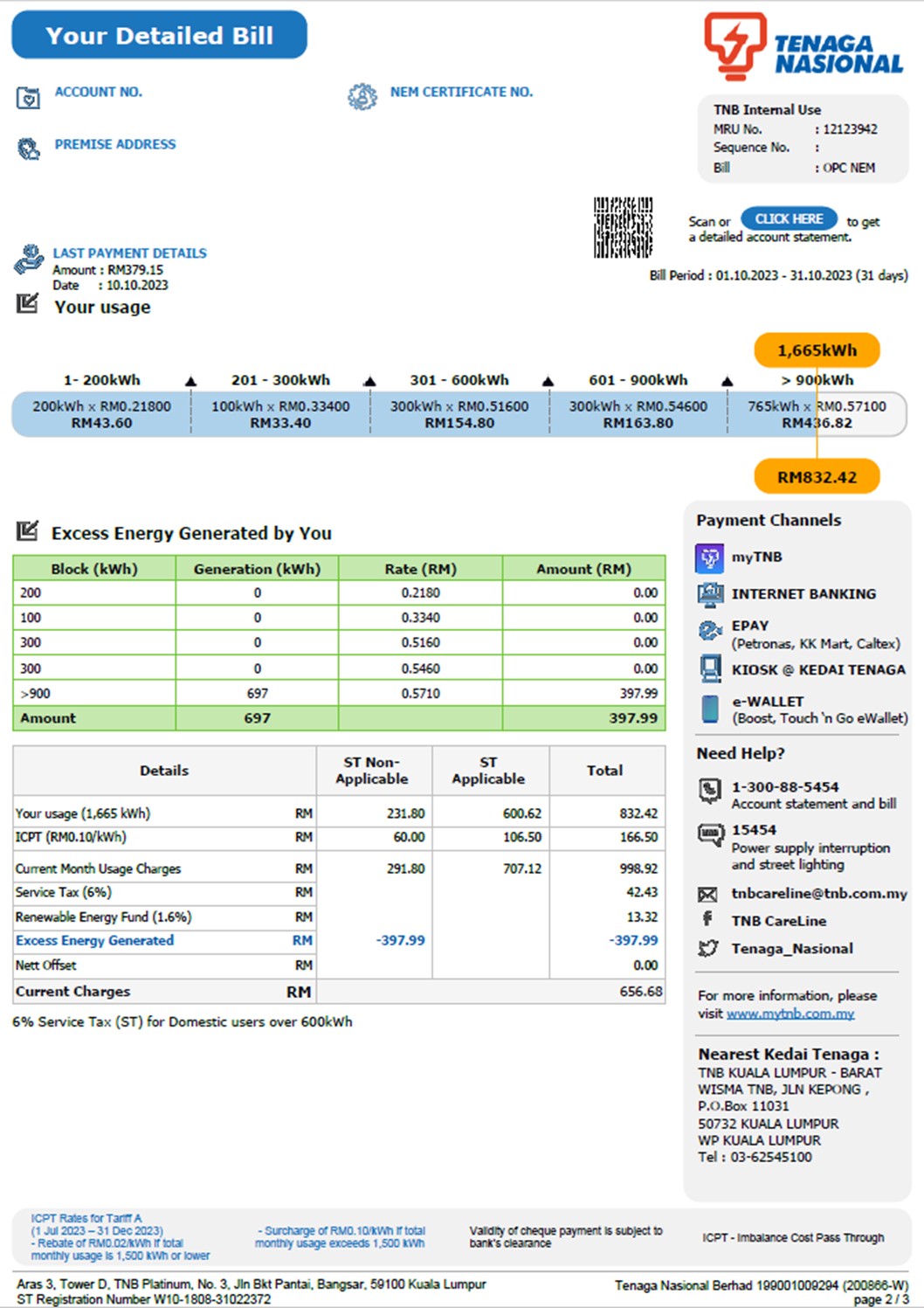Malaysia, a country blessed with abundant sunshine year-round, is making significant strides in harnessing solar energy to power its future. One of the key initiatives driving this transition is the Net Energy Metering (NEM) Solar Program, a government-led scheme designed to encourage the adoption of solar photovoltaic (PV) systems among businesses and homeowners. In this blog post, we’ll dive into what the NEM Solar Program is, how it works, and why it’s a game-changer for Malaysia’s renewable energy landscape.
What is the NEM Solar Program?
The Net Energy Metering (NEM) Solar Program was introduced by the Malaysian government in 2016 as part of its commitment to reducing carbon emissions and promoting sustainable energy. The program allows consumers to generate their own electricity using solar PV systems and export any excess energy back to the national grid. In return, they receive credits that can offset their electricity bills.
The program has undergone several iterations, with the latest version, NEM 3.0, launched in 2021. NEM 3.0 aims to accelerate the adoption of solar energy by offering more attractive incentives and simplifying the application process.
How Does NEM Work?
The concept behind NEM is simple yet powerful:
Install a Solar PV System: Consumers install solar panels on their rooftops or property. These panels generate electricity during daylight hours.
Use Solar Energy First: The electricity generated by the solar panels is used to power the consumer’s home or business. This reduces their reliance on electricity from the national grid.
Export Excess Energy: Any surplus energy that isn’t used is exported back to the grid. This excess energy is recorded by a bi-directional meter.
Receive Energy Credits: For every kilowatt-hour (kWh) of excess energy exported to the grid, consumers receive credits. These credits are then used to offset their electricity bills.
Under NEM 3.0, the “true net energy metering” concept is applied, meaning consumers are charged only for the net energy they consume from the grid after deducting the energy they’ve exported. This makes the program even more financially attractive.
Benefits of the NEM Solar Program
Cost Savings: By generating their own electricity, consumers can significantly reduce their monthly electricity bills. The energy credits earned from exporting excess energy further enhance these savings.
Environmental Impact: Solar energy is clean and renewable, helping to reduce Malaysia’s reliance on fossil fuels and lowering carbon emissions.
Energy Independence: With a solar PV system, consumers are less vulnerable to fluctuations in electricity prices and grid outages.
Government Incentives: The NEM program is backed by government policies and incentives, making it easier and more affordable for consumers to adopt solar energy.
Long-Term Investment: Solar PV systems have a lifespan of 25 years or more, providing long-term financial and environmental benefits.
Who Can Participate in NEM?
The NEM Solar Program is open to a wide range of participants, including:
Residential homeowners: Homeowners can install solar panels on their rooftops to reduce their electricity bills and contribute to a greener environment.
Commercial and industrial businesses: Businesses can lower their operational costs and enhance their sustainability credentials by adopting solar energy.
Government buildings: Public institutions can lead by example by transitioning to renewable energy.
Challenges and Opportunities
While the NEM Solar Program has been widely praised, there are still challenges to overcome:
High Initial Costs: The upfront cost of installing a solar PV system can be a barrier for some consumers, despite the long-term savings.
Awareness and Education: Many Malaysians are still unaware of the benefits of solar energy and how the NEM program works.
Grid Capacity: As more consumers adopt solar energy, the national grid must be upgraded to handle the increased flow of electricity.
However, these challenges also present opportunities for growth. The government, private sector, and NGOs can work together to provide financing options, raise awareness, and invest in grid infrastructure.
The Future of Solar Energy in Malaysia
The NEM Solar Program is a cornerstone of Malaysia’s renewable energy strategy. With its ambitious target of achieving 31% renewable energy capacity by 2025 and 40% by 2035, the country is well on its way to becoming a regional leader in clean energy.
As technology advances and costs continue to decline, solar energy will become even more accessible to Malaysians. Programs like NEM 3.0 are paving the way for a brighter, more sustainable future.
Conclusion
Malaysia’s NEM Solar Program is more than just a policy—it’s a vision for a cleaner, greener, and more sustainable future. By empowering consumers to generate their own electricity and contribute to the national grid, the program is transforming the way Malaysians think about energy.
Whether you’re a homeowner looking to cut your electricity bills or a business aiming to reduce your carbon footprint, now is the perfect time to explore the benefits of solar energy through the NEM program. Together, we can harness the power of the sun and build a brighter future for Malaysia.



